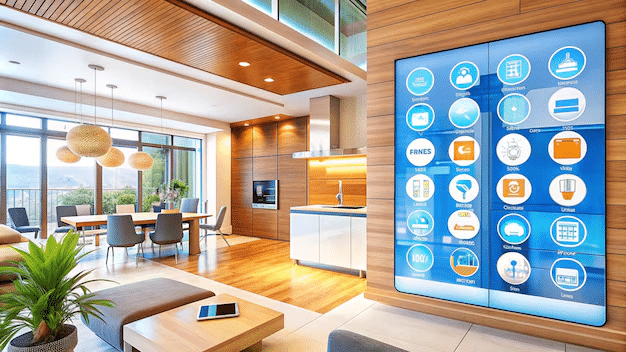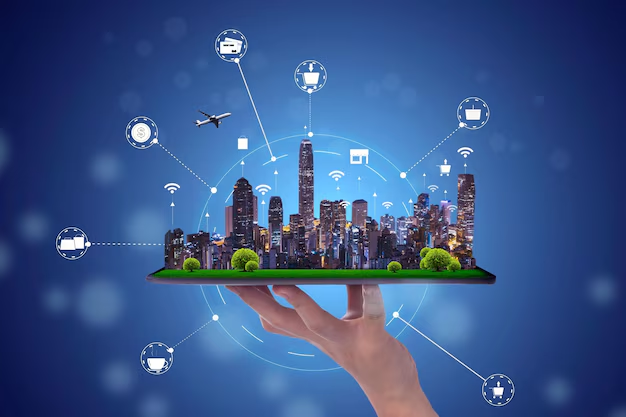The Internet of Things (IoT) is revolutionizing the way we live, work, and interact with our environment. As IoT devices become more prevalent and sophisticated, they are playing a critical role in transforming both smart homes and cities. By connecting everyday objects to the internet and enabling them to communicate and share data, IoT is creating a more efficient, convenient, and sustainable future for urban living. Let’s explore how IoT is reshaping the way we experience our homes and cities.
Transforming Smart Homes with IoT

Home Automation and Control
IoT is at the heart of home automation, allowing homeowners to control a wide range of devices from anywhere in the world using their smartphones, tablets, or voice assistants. Smart thermostats, lighting, and security systems can be controlled remotely, adjusting automatically based on your preferences or activities. For example, smart thermostats like Nest can learn your temperature preferences and adjust the heating or cooling based on your daily routines, ensuring comfort and saving energy.
Enhanced Security and Surveillance
One of the most noticeable benefits of IoT in smart homes is the advancement in security and surveillance. IoT-enabled cameras, motion detectors, smart locks, and doorbell cameras give homeowners more control and peace of mind. These systems can alert homeowners to unusual activity in real time, and allow remote monitoring from any location. For instance, smart cameras like Ring enable users to see who is at their door, speak with visitors, and even unlock doors remotely, providing greater security and convenience.
Energy Efficiency
IoT-enabled smart homes are designed with energy efficiency in mind. Smart appliances, lighting systems, and energy meters help reduce unnecessary power consumption by providing real-time data and making automatic adjustments. For example, smart light bulbs can turn off when a room is not in use, while smart appliances can be programmed to operate during off-peak hours when energy rates are lower. Additionally, solar panels and energy storage systems can be integrated into a smart home setup, optimizing energy use and reducing electricity costs.
Health and Well-Being
IoT technology can also improve health and well-being at home. Wearable devices like fitness trackers and health monitors collect data about your activity levels, sleep patterns, and vital signs, helping users monitor and manage their health. Smart home technologies also support individuals with disabilities or aging adults by offering solutions like automated medication dispensers, fall detection systems, and voice-controlled home assistants, ensuring a higher quality of life and safety.
Personalized Living Experience
IoT enables the creation of personalized living experiences by learning user preferences and habits. For instance, smart entertainment systems can suggest movies, music, or shows based on your past preferences, while voice assistants like Amazon Alexa or Google Assistant can adjust home settings based on your commands. Over time, these systems can create a more intuitive, personalized, and efficient living space for residents.
Transforming Cities with IoT
Smart Traffic Management
IoT is making cities more livable by improving traffic flow and reducing congestion. Smart traffic lights equipped with IoT sensors can adjust to traffic patterns in real-time, ensuring smoother travel and reducing wait times at intersections. Additionally, IoT-enabled vehicles can communicate with the infrastructure, sharing data about their location and speed, allowing for better traffic management and safer roads. These innovations help reduce carbon emissions and the stress associated with traffic jams.
Waste Management
Smart waste management is another significant benefit of IoT in cities. IoT-enabled trash bins can monitor waste levels in real-time and send alerts to waste management teams when they need to be emptied. This ensures that waste collection is more efficient, reducing unnecessary pickups and helping to maintain cleaner public spaces. Some cities have also adopted smart trash bins that can automatically compress waste, optimizing storage and reducing the frequency of waste collection.
Environmental Monitoring
IoT is helping cities track and improve environmental conditions by enabling the collection of real-time data on air quality, water quality, noise levels, and temperature. Smart sensors placed throughout urban areas can detect pollution levels, allowing city officials to make data-driven decisions to improve air quality and public health. IoT systems can also monitor natural resources, helping cities conserve water and energy more effectively. For example, smart irrigation systems can optimize water usage for parks and public gardens.
Smart Buildings and Infrastructure
IoT is transforming urban infrastructure by making buildings and utilities smarter and more energy-efficient. Smart sensors in buildings can monitor temperature, humidity, lighting, and occupancy, adjusting systems for optimal energy use. For example, IoT-enabled lighting systems can automatically adjust brightness based on natural light levels or occupancy, reducing energy waste. Smart buildings are also equipped with IoT technology to monitor maintenance needs, preventing costly repairs by detecting issues before they become major problems.
Public Safety and Emergency Response
IoT enhances public safety by enabling real-time data collection and communication across the city. For example, IoT sensors can monitor public spaces for unusual activity or detect hazards like gas leaks, fires, or floods. These sensors can send alerts to local authorities, enabling faster response times during emergencies. IoT can also support emergency management systems by providing first responders with real-time information about traffic conditions, road closures, and available resources, helping them respond more effectively during critical situations.
Conclusion
IoT is revolutionizing both smart homes and cities by offering solutions that enhance convenience, security, sustainability, and overall quality of life. In smart homes, IoT enables automation, energy efficiency, personalized experiences, and improved health management. In cities, IoT optimizes traffic management, waste collection, environmental monitoring, and public safety. As IoT technology continues to evolve, it will play an even more significant role in shaping the way we live and interact with our environment, making homes and cities smarter, more efficient, and more connected than ever before.
FAQs
1. What is IoT in the context of smart homes?
IoT in smart homes refers to the use of internet-connected devices that can collect data, communicate with each other, and be remotely controlled. These devices can include smart thermostats, lights, cameras, locks, and appliances that help automate and enhance the living experience.
2. How does IoT improve energy efficiency in homes?
IoT helps improve energy efficiency by enabling smart devices to monitor and adjust energy consumption. For instance, smart thermostats optimize heating and cooling, and smart lights turn off when not needed, reducing overall energy usage.
3. What are the benefits of IoT in smart cities?
IoT enhances urban living by optimizing traffic flow, improving waste management, monitoring environmental conditions, and increasing public safety. It also helps cities operate more efficiently and sustainably.
4. How does IoT improve traffic management in cities?
IoT sensors on traffic lights and vehicles help monitor traffic patterns and adjust signals in real-time, reducing congestion and making travel more efficient. This leads to smoother traffic flow and reduced carbon emissions.
5. Are smart homes and cities secure with IoT?
While IoT offers many benefits, security is a concern. IoT devices in smart homes and cities must be properly secured to prevent unauthorized access. Encryption, secure networks, and regular software updates are essential to maintaining the safety and privacy of IoT systems.


